If you’ve heard the phrase ‘taking guard’ in the context of batting in cricket and you’re a bit unsure about what it means, then you’ve come to the right place! This is one of those classic cricketing phrases that can cause people a lot of confusion when they’re new to the sport. Believe it or not, taking guard correctly is one of the most critical aspects of a good batting technique, and it’s something that I think all batsmen should have a good understanding of! However, having said that, you’d be surprised at how few people actually know anything about it!
In this post I will teach you everything you need to know about taking guard in cricket. I’ll specifically take you through the following questions:
- What does ‘taking guard’ mean?
- How do you take guard during a cricket match?
- Which guard should you be taking?
Let’s get started!
What Does ‘Taking Guard’ Mean?
Taking guard when you go out to bat refers to where you stand once you get into your batting stance at the crease. Specifically, it refers to the position that you put your feet in! For example, batsmen who choose to take an off stump guard will align the front of their shoes with the off stump. Batsmen who take a leg stump guard will put their shoes in line with the leg stump, and so on! Most players will take guard when they begin their innings, as well as periodically throughout the rest of their innings!
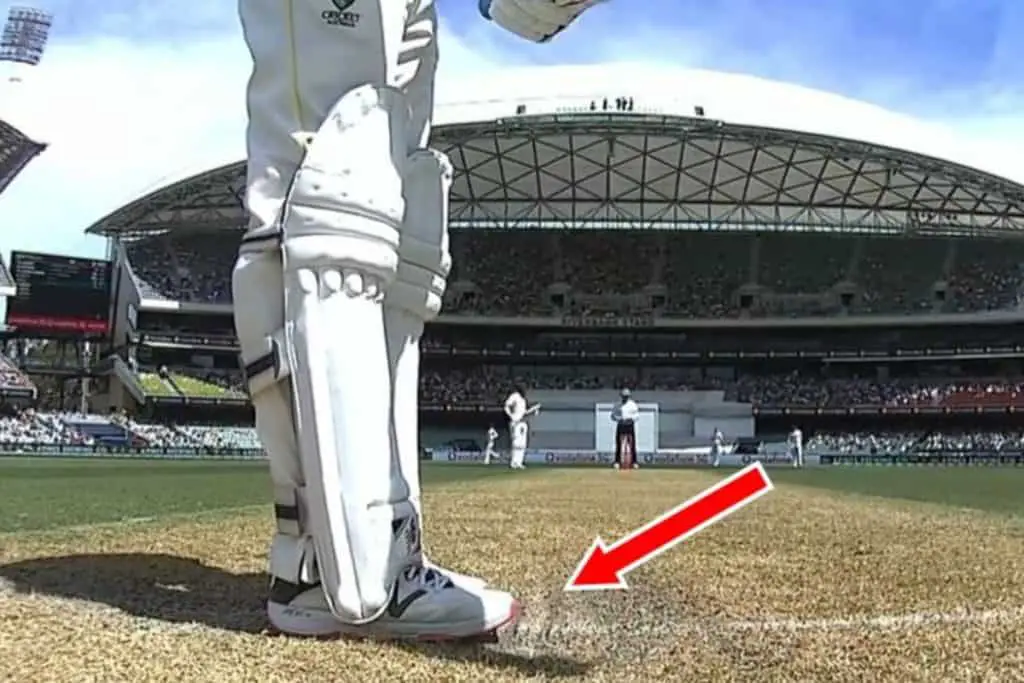
The guard is one of the core aspects of your batting technique, and allows you to get yourself into the best possible positions when playing the ball. I will cover this more in later sections, but first, let’s look at what you actually have to do to take your guard once you’re out in the middle!
How Do You Take Guard While Batting?
Sometimes it’s hard for beginners to know exactly what they should be doing when they get out to the middle, and this is especially true when it comes to taking guard. But there’s really nothing to worry about.
Here is a little guide you can follow to make sure you take your guard properly:
- Wait until you’re on strike. There is no need to take your guard if you’re at the non-strikers end.
- Once you are on strike, decide which guard you want to take and hold your bat upright in front of the stumps. Hold the bat so the umpire at the non-strikers end can see the side of the bat. The face of the bat should be facing towards point.
- When you have the bat in that position, call out to the umpire and tell them which guard you wish to take. For example, if you take a middle stump guard call out and say something like ‘Can I have middle stump please’. The umpire will then advise you which way to move your bat to get it in line with the stump that you have called out.
- Once the umpire confirms that your bat is in line with the guard you wish to take, you must use your boot to scratch a line on the pitch where your bat was positioned. Most batsmen will tilt their foot inwards slightly and use the spike on the inside edge of their boot to scratch a straight line on the popping crease. Tilting the foot helps us to only use one spike to make the mark! If we keep our foot flat while doing this then all of our spikes will make a mess of the crease, which is not really a good thing!
- Once you have made the line with your boot, place your feet just behind it and get into your batting stance, ready to receive the ball.
The diagram below shows some of the main guards that batsmen will take.
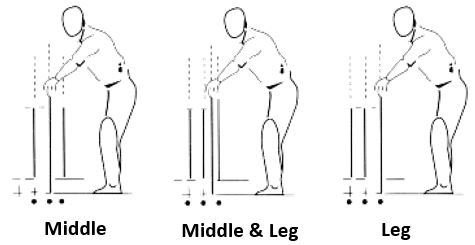
Why Do Batsmen Take A Specific Guard?
Batsmen use a guard to ensure that they are standing in the same position for all the deliveries they face from a certain bowler. By scratching the same mark on to the pitch every time they go out to bat, and placing their feet just behind it, a batsman can be sure they are in their desired position. Basically, the guard is used as a point of reference!
For a second, imagine what would happen if batsmen did not use a guard and instead took their stance at different points on the crease for every ball. This would make it much harder for them to get into a consistent batting rhythm, and it would definitely make it much harder for them to judge the line and length of the ball. In order to judge line and length properly, we need a solid reference point/position, and this is what the guard provides us with.
Most batsmen use the guard as a way to get their head into a good position when the bowler delivers the ball. I am a big fan of taking a middle stump guard because that guard will lead to your outside eye (right eye for right handed batsmen, left eye for left handers) being in line with your off stump. Having your head and eyes in line with the off stump makes things much simpler for batsmen! For right handers who get themselves in this position, any delivery that is wider than the line of their right eye can be left alone because they know it will be missing the stumps. Conversely, any delivery inside their line of vision, or inside the line of their right eye will probably need to be played at because it will be on the line of the stumps.
The more you bat using a certain guard, the more you will get used to it. You’ll be able to identify the line of the ball quicker, as well as knowing which types of shot you should be looking to play to which ball.
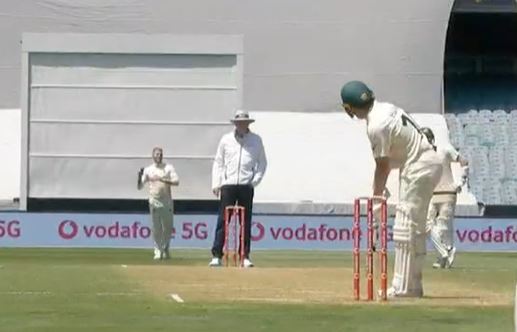
Which Guard Should You Take?
Each guard has their own advantages and disadvantages. Batsmen will use different guards to try to emphasise their strengths and cover up their weaknesses. Let’s analyse the main types of guard in detail and see what each of them can do for you!
Off Stump Guard
Batsmen that take an off stump guard will often do so because they are consciously trying to get themselves further across the crease to the off side. If you are someone who gets a lot of outside edges when trying to drive the ball outside the off stump, then you may want to consider taking an off stump guard. This will allow you to get your head a bit closer to the line of the ball and may lead to you hitting the ball out of the middle of the bat more often.
I remember Joe Root taking this approach a couple of years ago because he was constantly getting out edging the ball through to the wicketkeeper and the slip fielders. He switched his guard to the off stump and as a result became a better player against balls that were wide of the off stump. However, he now gets out a lot more to straight balls!
Advantages: Gets your head further across to the off side, which will mean you are not driving the ball away from your body as regularly. Getting across to the off side can also allow you to hit more balls that are slightly wide of the off stump in to the leg side.
Disadvantages: Moving your feet across to the off stump means that your pads will now be in front of the wickets. If you miss a straight ball, there is a high chance you’ll be out LBW!
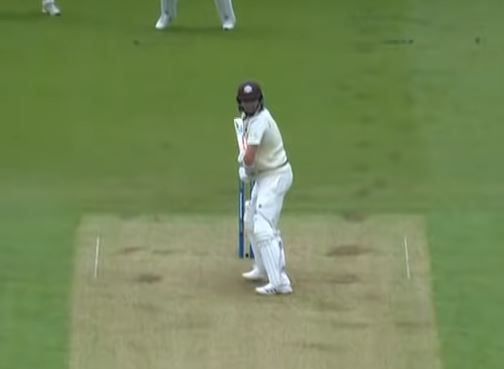
Leg Stump Guard
Batsmen that take their guard on leg stump are often players that primarily try to score through the off-side. The leg stump guard means that more of the deliveries they receive will arrive on the off-side of their body, and as a result they can play their shots in those areas a lot more freely. Bowlers will be less likely to target the pads of the batsman as there is a higher chance that the ball will be missing the stumps and going down the leg side!
If you’re a player that is incredibly strong through the off-side and not as confident when playing through the leg side, you may wish to use a leg stump guard to highlight this strength!
Advantages: The leg stump guard opens up the off side for the batsman, providing them with more opportunities to score in that region. It also means you will be less at risk of getting out LBW due to the fact that your pads aren’t covering your stumps as much!
Disadvantages: When you take a leg stump guard you’re putting yourself at a much higher risk of being bowled. You’re also making yourself more susceptible to getting outside edges because you’ll be playing the majority of your shots on the off side of your body! In most games, there will be fielders waiting to take advantage of these outside edges so you’ll have to manage the risk!
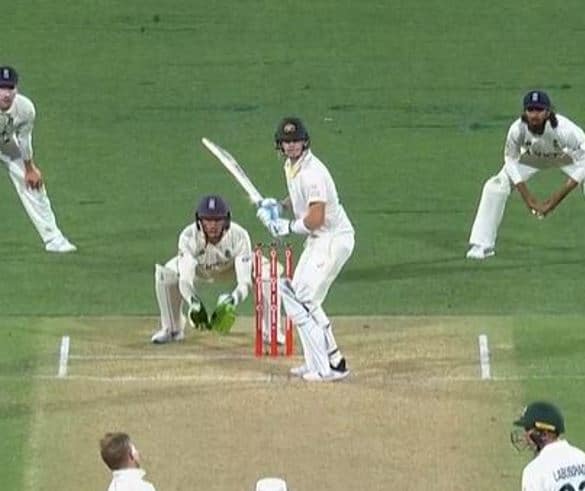
Middle Stump Guard
Most players who are relatively new to the game will take a middle stump guard. it’s a great one to start with when you’re getting used to batting! Players who take this guard will be looking to play shots on all sides of the wicket as well as down the ground back past the bowler!
I’ve found that the middle stump guard helps me to get my head in an excellent position when the ball is delivered. This helps me a lot when choosing which balls to leave alone and which ones to play at!
Advantages: The middle stump guard sets you up well to play shots on all sides of the wicket. It helps you to get your head and eyes directly over the off stump, from which you can judge the line of the ball more clearly
Disadvantages: There aren’t many significant advantages to the middle stump guard. Batsmen will often move away from this kind of guard when they want to protect themselves against a certain type of dismissal, like I mentioned with the off stump and leg stump guards above!
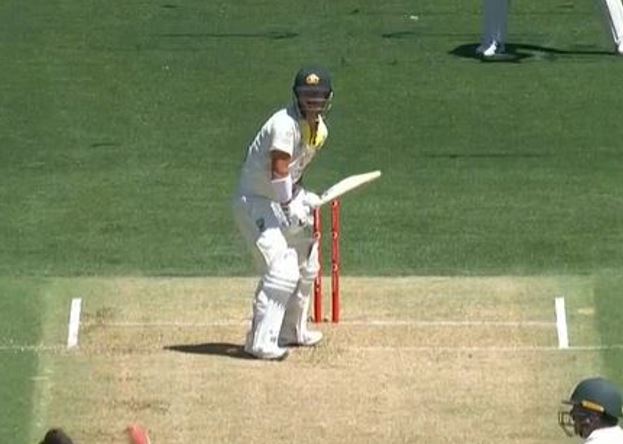
Do Players Take Different Guards To Different Bowlers?
The answer to this is yes! Many batsmen will adjust their guard slightly or adjust their position on the crease depending on which bowler they are facing.
For example, some right handed batsmen who take a middle stump guard against right arm fast bowlers, may choose to take a leg stump guard against left arm fast bowlers. This is partly due to the fact that left arm bowlers will be bowling from the opposite side of the wicet, and also because they have a much higher chance of getting right handed batsmen out LBW. Batsmen make the change to the leg stump guard to ensure that they aren’t covering the stumps with their pads as much, decreasing the risk of the LBW! Of course, moving to the leg stump guard against left arm fast bowlers causes its own problems. It causes you to expose your stumps a lot more, which increases the chances of you getting bowled! To combat this a lot of players will continue to use their middle stump guard, but open their stance up a bit by moving their front foot slightly towards the leg side. This gets the front leg in a better position in case the ball swings back in towards the pads!
You’ll also often see batsmen change their guards when facing spin bowlers. For example, when facing a spin bowler that is primarily spinning the ball in towards your body, you may choose to take an off stump guard. This gets your pads closer to the line of the ball, and means that more deliveries will spin in towards your pads, allowing you to turn the ball into the leg side a lot easier than if you had set up on middle/leg stump.
If you’re having trouble against a certain type of bowler, then you may want to talk to your coaches about changing your guard. They should be able to give you some good ideas about how you can combat that style of bowling!
Can You Adjust Your Stance Once You Have Taken Guard?
Loads of batsmen adjust their stance after they have taken their guard, and they will mainly do this for a couple of reasons.
Most professionals use their guard as a starting point, before they move to get into their final position. To do this they use a ‘trigger move’, which is a small movement of the feet that occurs just before the bowler delivers the ball. These trigger moves often feature a small back and across movement, taking the batsman slightly across to the off side. Some trigger moves are more significant, like the one Steve Smith uses! He takes a leg stump guard and then takes a big step across the crease towards the off stump.
Another reason batsmen will move after they’ve taken guard is to put the bowler off. This happens a lot in shorter formats of cricket, where batsmen will move themselves sideways on the crease in order to open up scoring options for themselves.
What Are Other Words People Use To Describe Their Guard?
When asking for a guard, there are several words and phrases you may hear used that can cause confusion. I’m going to go through of these in this section and explain what they mean.
Middle and leg – Some batsmen will ask for ‘middle and leg’ guard. This refers to the gap in between middle and leg stump.
2 Legs – If you hear someone ask for the 2 Leg guard, then you should know that this means exactly the same thing as middle and leg, which I explained above.
1 Leg – A batsman who asks for ‘1 leg’ is just asking for a leg stump guard. This is simply another way of referring to it!
Middle and Off – A batsman who asks for ‘middle and off’ is asking for a guard that is in between the middle stump and the off stump.
2 – A batsman who asks for ‘2’ is asking for the middle and leg guard, as I explained above.
Centre – A batsman who asks for ‘centre’ is asking for a middle stump guard.
Conclusion
As I’ve already mentioned, feel free to ask your coaches about which guard you should be taking and they’ll be able to give you some specific advice that suits your technique! Remember, batting is all about working on your own game and finding out what works for you. This is the best way to become confident in your own batting skills. Your coaches are there to help you to get to this point! If you’re interested in getting some more of my batting tips for beginners, click this link to read my 9 favourites!
